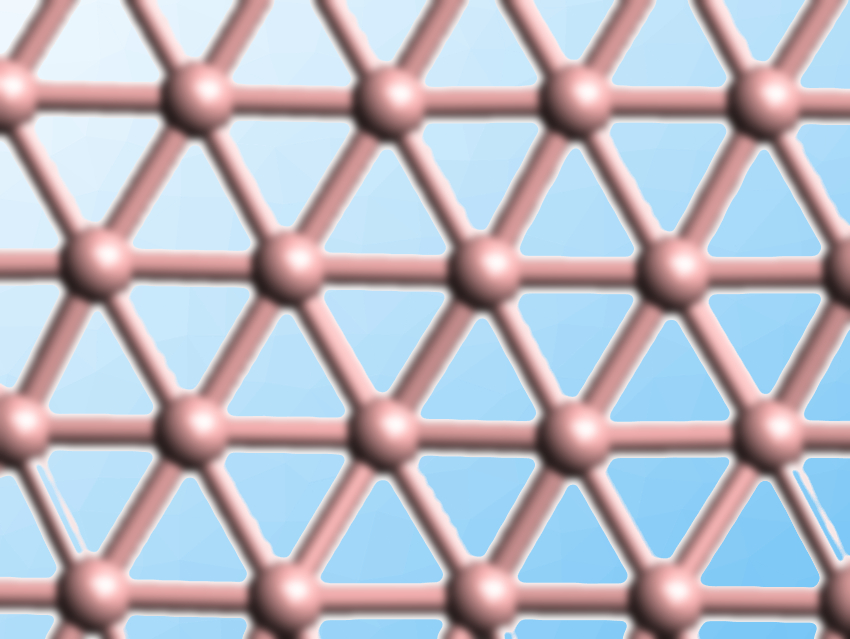Borophene is a 2D material composed only of boron atoms. It adopts a triangular lattice (pictured) with periodic hole arrays. Compared to more common 2D materials such as graphene, the properties of borophene have not been as extensively studied.
Kehui Wu, Chinese Academy of Sciences, Beijing, and Songshan Lake Materials Laboratory, Dongguan, China, Lan Chen, Ping-Heng Tan, Chinese Academy of Sciences, and colleagues have used in-situ Raman spectroscopy, tip-enhanced Raman spectroscopy (TERS), scanning tunneling microscopy (STM) and density functional theory (DFT) calculations to determine the vibrational and electron-phonon coupling (EPC) properties of borophene. All experiments were carried out in an ultra-high vacuum (UHV) STM-TERS system that was combined with a molecular beam epitaxy system (MBE). The borophene was synthesized in the MBE chamber before being transferred to the various analysis chambers.
The researchers studied the β12 and χ3 phases of borophene, which differ by the arrangements of “holes” in the lattice. The team found an electron-phonon coupling strength of 0.53–0.59. The χ3 phase was found to be inherently metallic in nature. There is also the potential for borophene to show superconductivity, as its β12 and χ3 phases have estimated critical temperatures (Tc) of 7.1 and 9.8 K, respectively. The measured vibrational and EPC properties can help researchers to further study the mechanical, electronic, and intrinsic superconducting properties of borophene.
- Raman Spectroscopy of Two-Dimensional Borophene Sheets,
Shaoxiang Sheng, Jiang-Bin Wu, Xin Cong, Qing Zhong, Wenbin Li, Wenqi Hu, Jian Gou, Peng Cheng, Ping-Heng Tan, Lan Chen, Kehui Wu,
ACS Nano 2019.
https://doi.org/10.1021/acsnano.8b08909




